
WILDFLOWER WEEK | JULY 2023 SPONSORED BY
Wildflower Week
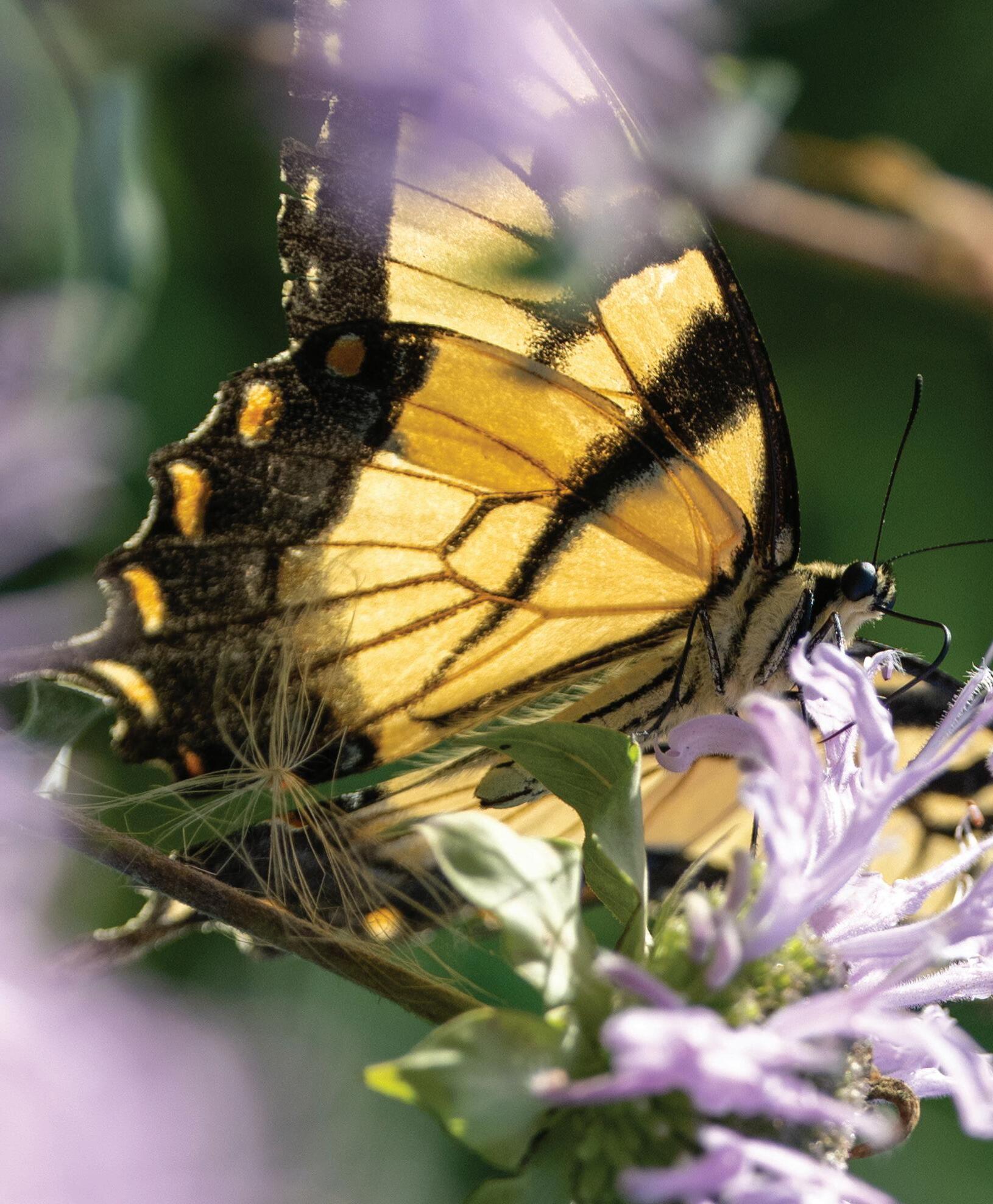
1
Jennifer Mathes
WELCOME TO WILDFLOWER WEEK!

Every summer, the countryside in Willistown explodes with color and the sounds of buzzing bees and birds calling; a symphony of nature. Now more than ever, each of us must do all we can to support nature at home and in our community. Planting wildflowers provides pollinators and birds with food, requires less maintenance than lawns, and less water than ornamental plants. WCT is committed to helping our community support wildlife and with our new lawn conversion grant from the Pennsylvania Department of Conservation and Natural Resources, we are able to help public and private landowners transform mown lawns into rich high quality meadow habitats by subsidizing the cost of installation.
This year, we invite you to explore the countryside and visit our nature preserves. Kirkwood features goldenrod, asters, big bluestem, and blue vervain. At Rushton in the rain garden, you will find purple coneflower, bee balm, and butterfly weed. Stop by Hartman Meadow at our office and explore asters, cup plants, ironweed, and Joe Pye weed. Asbridge is home to a wonderful variety of native wildflowers in the pipeline right of way including milkweed, ironweed, and a variety of asters and goldenrods.
Wherever you go in Willistown, stunning varieties of wildflowers provide a feast for your eyes. So stop and listen to the birds and bees, smell the fragrance in the air, brush your fingertips against the tall grasses, and delight in all there is to enjoy nature on conserved lands.
3
1 2 3 4
WILDFLOWER WEEK SELF-GUIDED TOUR MAP & LOCATIONS
1 2 3 4
Hartman Meadow
Willistown Conservation Trust Office
925 Providence Road, Newtown Square
Rain Garden & Foundation Garden
Rushton Conservation Center
915 Delchester Road, Newtown Square
Pick up your free wildflower seed packet here!
Native Shade Garden
Entrance to Rushton Farm Area
911 Delchester Road, Newtown Square
Rushton Farm Wildflower Meadow
Rushton Farm, crop fields near hedgerow
911 Delchester Road, Newtown Square
OUR PRESERVES
Ashbridge Preserve 1691 E. Strasburg Road, West Chester Over 125 native trees and shrubs were planted as part of a streamside buffer restoration project along the west bank of Ridley Creek.
Kirkwood Preserve
855 Grubbs Mill Road, Newtown Square
Over 600 native trees and shrubs have been planted along Crum Creek and Massey Run within Kirkwood Preserve. To view this area, see the map in the kiosk.
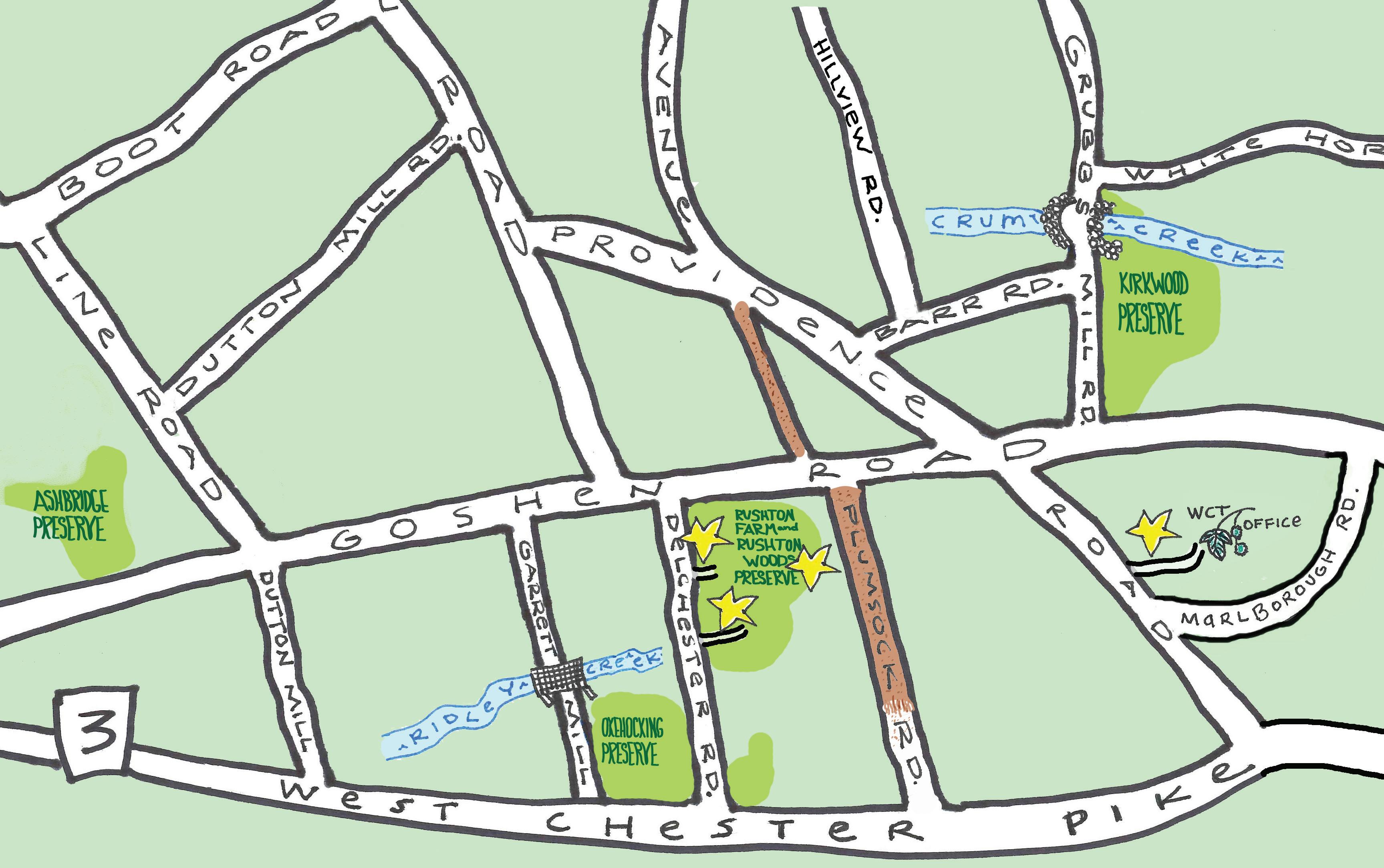
Rushton Woods Preserve & Farm
911 Delchester Road, Newtown Square
The lush woodlands of Rushton Woods Preserve are an excellent space to gather ideas to create your own shade garden. In the spring, native ferns, including Northern maidenhair ferns can be seen along the trails throughout the woodland. Additionally, a woodland restoration project completed in 2017 features a variety of understory trees and shrubs including, eastern redbud, silky dogwood, and winterberry holly.
4
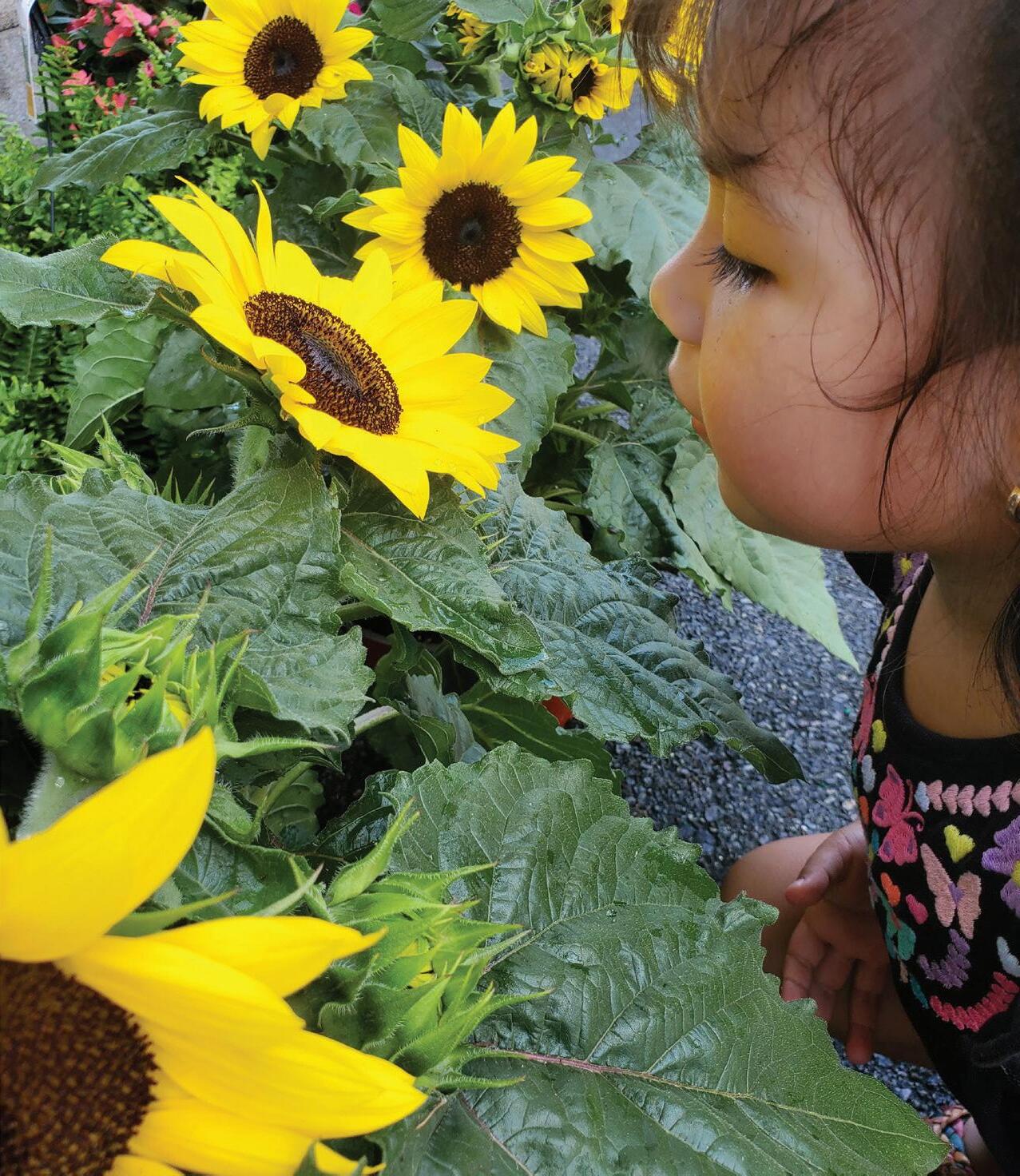

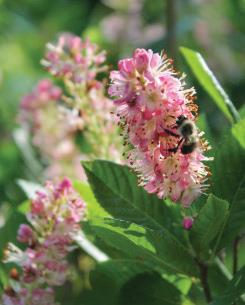
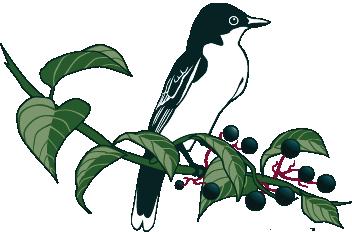
5 PEOPLE 610.358.8900 green-weaver.com info@green-weaver.com LAND STEWARDSHIP FOR AND THE PLANET •Inspired Landscape Design •Expert Horticultural Services & Garden Maintenance •Skilled Craftsmanship & Project Management •Thoughtful Stormwater Management •Vibrant Pollinator Gardens & Meadows G REEN W EAVER LANDSCAPES
HARTMAN MEADOW
It has been well documented that mowed lawn areas are typically a monoculture of non-native grasses, which require a great deal of time, water, and chemicals to maintain while providing little benefit to wildlife. In 2008, the Trust decided to create a one-acre demonstration wildflower meadow to highlight a simple, attractive, and sustainable planted alternative to a manicured lawn. With over 48 million acres of lawn in the U.S., in addition to studies indicating worrying declines in bird and insect species due to habitat loss, it is time to begin viewing our lawns as places where conservation can occur.
Native plant species provide cover and seeds for birds, act as nectar and food sources for butterflies, bees, and other insects, and offer aesthetic diversity through their varied colors and textures. Over time, native grass and wildflower species in a meadow generally out-compete the weeds, making the wildflower meadow far less maintenance-intensive than a pure lawn. The roots of established native plants reach deep into the earth, sometimes even mining groundwater, making a native meadow much more drought tolerant than a lawn. The establishment of these deep root systems can take 2-3 years, but the rewards are worth the wait.
To ensure the successful establishment of our meadow, we purchased about 800-1,200 landscape “plugs” (young plants) each year beginning in 2008, and planted them in manageable 20’ x 30’ plots, adding one new plot each year through 2017. In late April and early May, plugs were planted directly into the existing turfgrass by hand at a ratio of one per square foot; the turfgrass acts as a cover crop to discourage other weeds. Native grasses were incorporated as plugs or seeds into the plots along with the wildflowers. The plots are mowed only once annually, typically in late March/early April to provide food and cover for over-wintering bird species and other wildlife.
HARTMAN MEADOW
-Virginia mountain mint
-Butterfly weed
-Leaved goldenrod
-Common milkweed
-Tall coreopsis
-Joe Pye weed
-Short-toothed mountain mint
-Culver’s root
-Poke weed
-Cup plant
PROVIDENCEROAD
-Black-eyed susan
-Gayfeather
-Sunflower
-Purple coneflower
-Bergamot
HARTMAN MEADOW | was named in February 2020 in honor of the previous Director of Stewardship, Bill Hartman for over thirteen years of service and dedication to Willistown Conservation Trust.
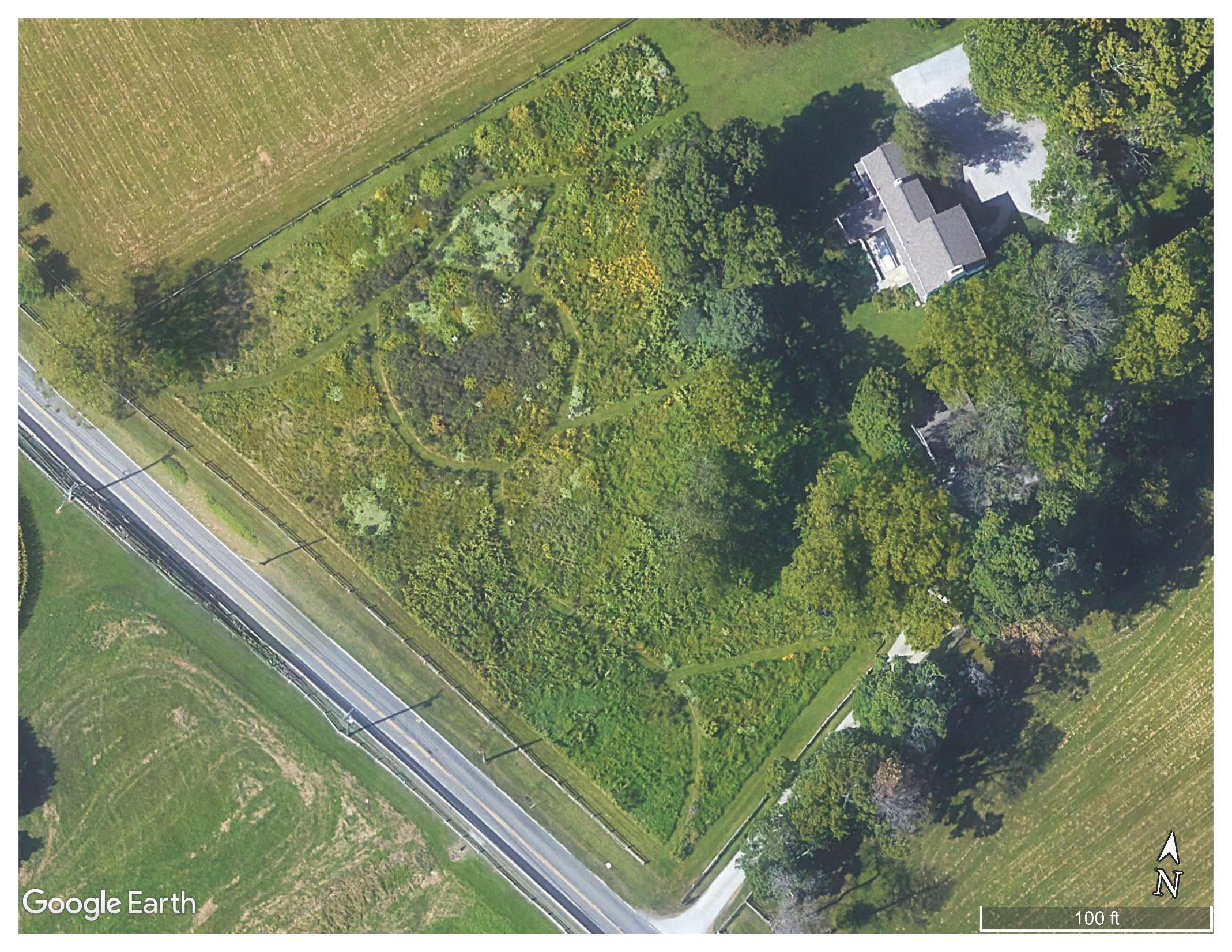
PERENNIALS
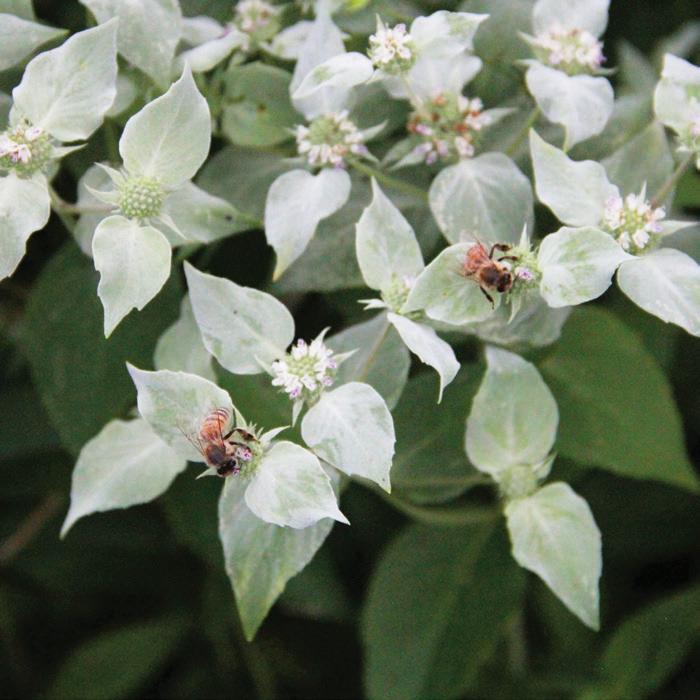

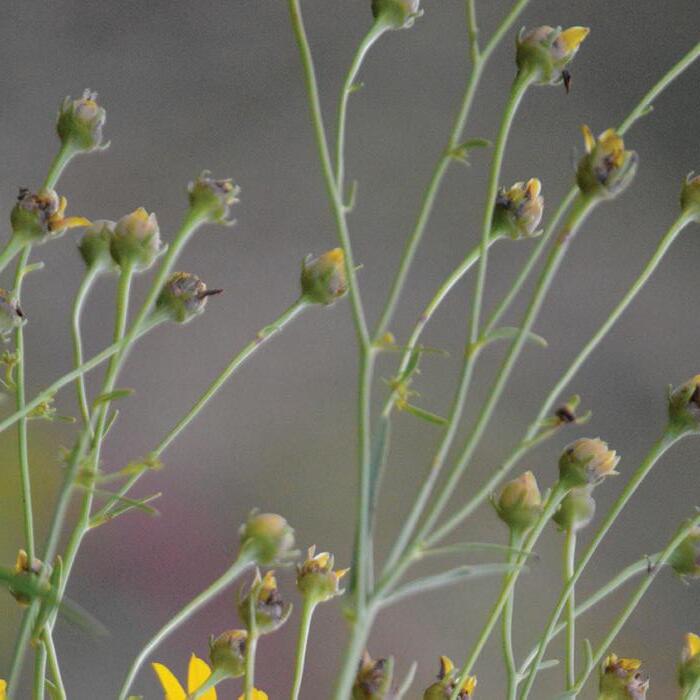
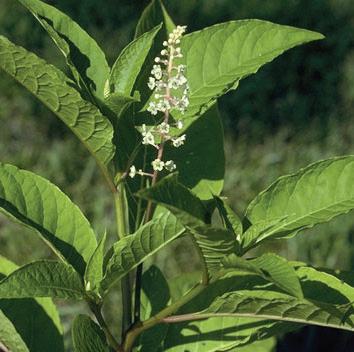
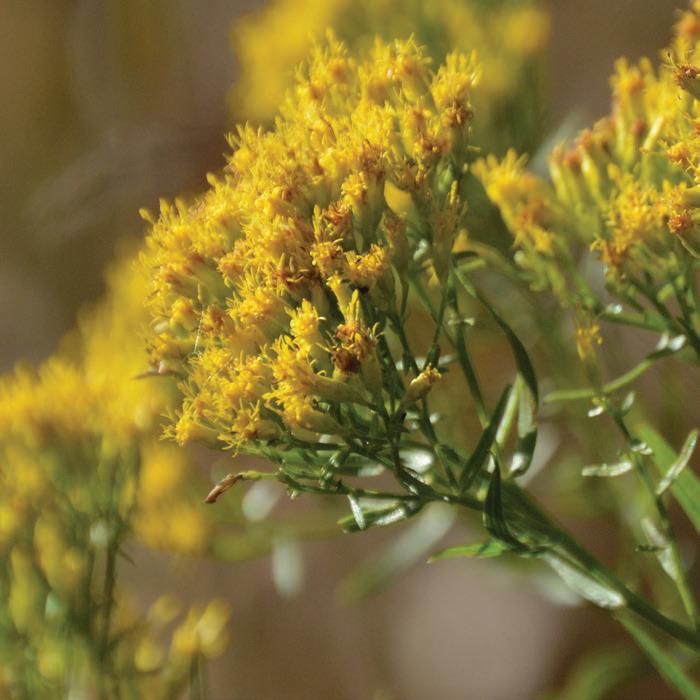
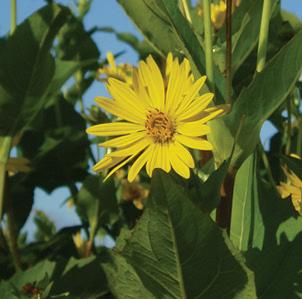
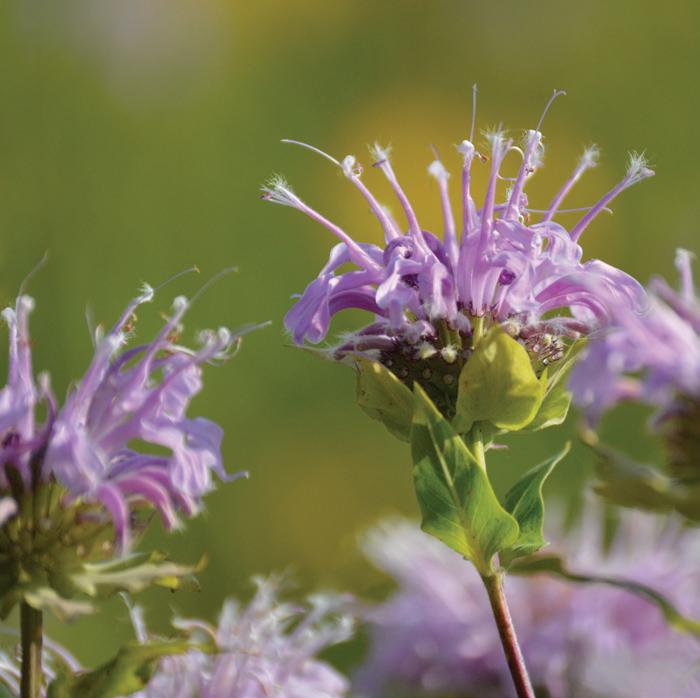
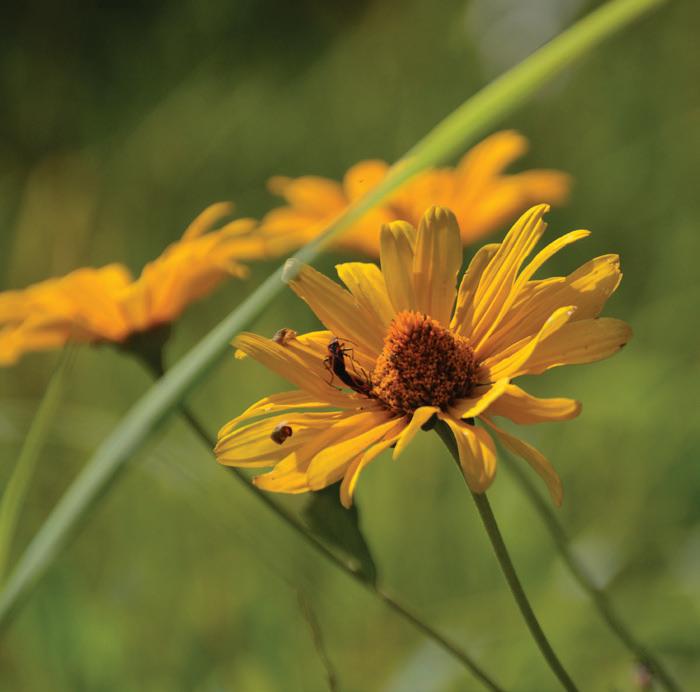
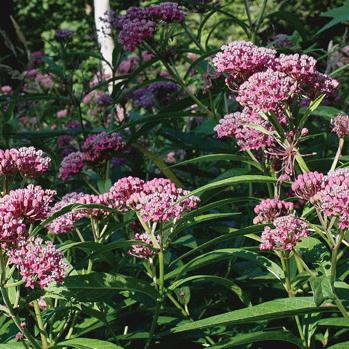
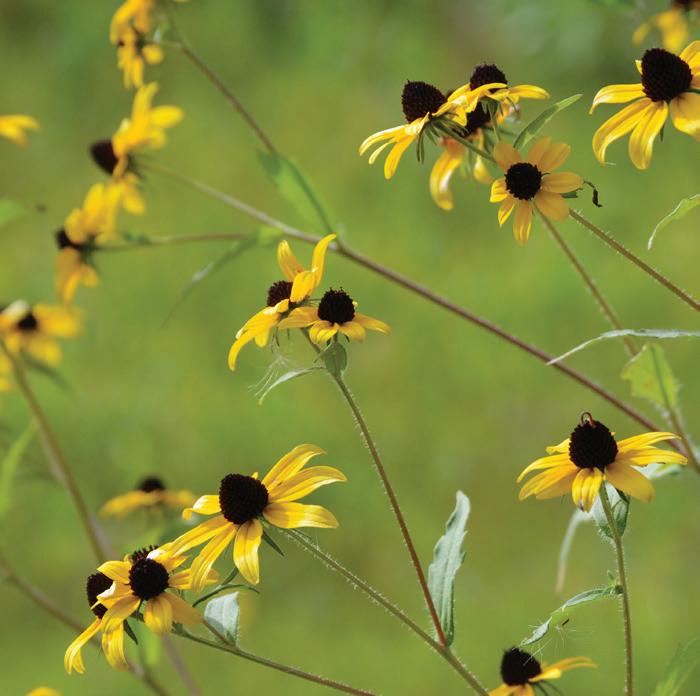
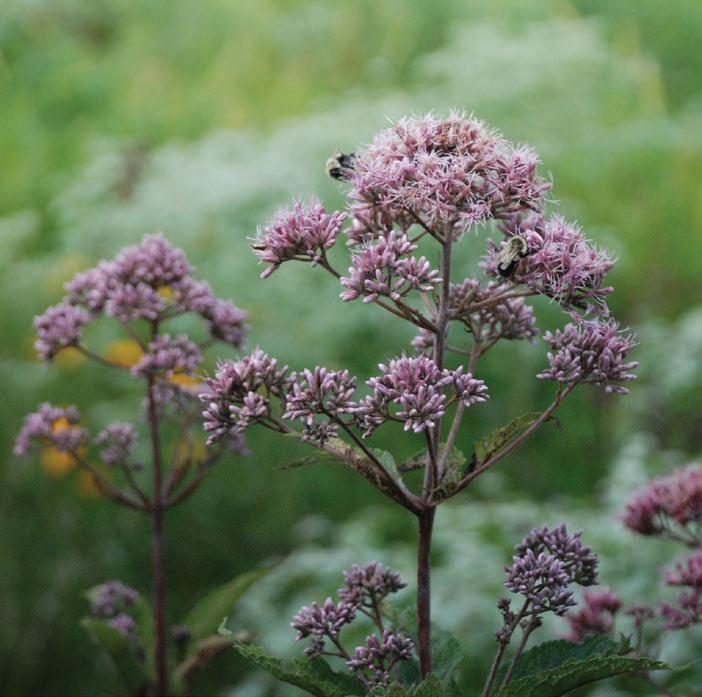
7
Joe Pye weed (Eupatorium fistulosum)
Swamp Milkweed (Asclepias incarnata)
Tall coreopsis (Coreopsis tripterus)
Culver’s root (Veronicastrum virginicum)
False sunflower (Heliopsis helianthoides)
Mountain Mint (Pycnanthemum muticum)
Wild bergamot (Monarda fistulosa)
Black-eyed Susan (Rudbeckia fulgida) Cup Plant (Silphium perfoliatum)
Grass-leaved goldenrod (Solidago graminifolia)
Pokeweed (Phytolacca americana)
Blake Goll/Staff, Kristen Henwood, Stephanie Kuniholm, Monica McQuail, Lady Bird Johnson, High Country Gardens, Missouri Botanical Garden, Budburst, Gardenia.net, U.S. Forest Service, American Meadows, Cochato Nursery, Centerton Nursery, Gerris, and Wikipedia.
Photos:
RUSHTON CONSERVATION CENTER RAIN GARDEN

The Rushton Conservation Center (RCC) driveway wraps around the Rushton Rain Garden, planted in 2018. Designed by Johnathan Alderson Landscape Architects, this garden features a variety of perennials, grasses, and woody plants carefully selected for their ability to withstand wet soils to help mitigate the stormwater runoff created by the paved driveway. Roadways, driveways, and sidewalks carry water to storm drains, which feed directly into our local waterways. This water can carry pollutants and debris like road salts, heavy metals from cars, and sediment that impacts the water quality. Increased development of impervious surfaces, or surfaces that water cannot seep through, can also lead to increased flooding because more water is carried to our streams through the storm drains.
Rain gardens are designed to intercept water and help return it slowly back into the ground while filtering out contaminants. They can have deep basins, like ours at the RCC, or the depression can be subtle. Our basin has a drain in the center for excess water during heavy downpours carrying the water downhill to a meadow where it will also slowly filter back into the ground.
The plants used in rain gardens, or other soggy areas in a garden, like to “have their feet wet.” Their deep root systems can withstand heavy rainfall over a short amount of time and through periods of drought. These plants can also be the perfect addition near downspouts and along driveways.
The Rushton Conservation Center Rain Garden was made possible by the generosity of Lida A. Wright.
8
Monica McQuail/Staff
PERENNIALS
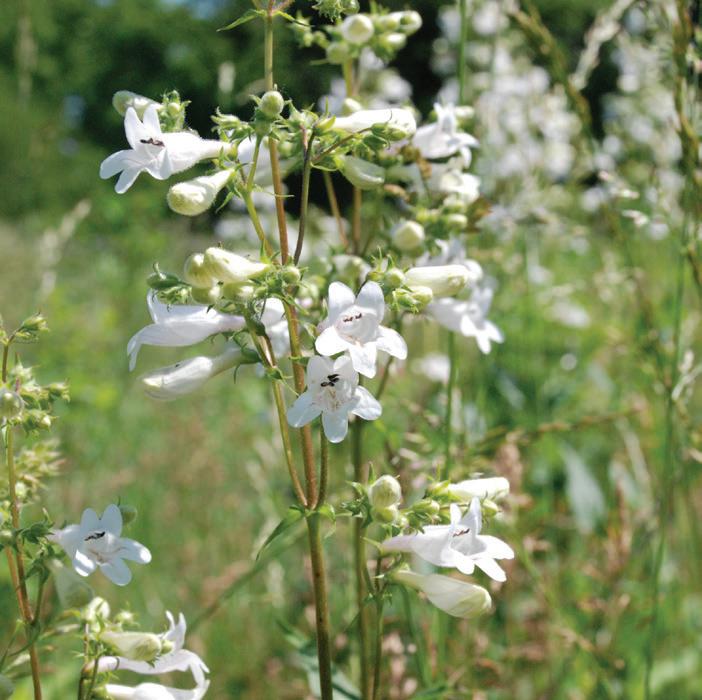
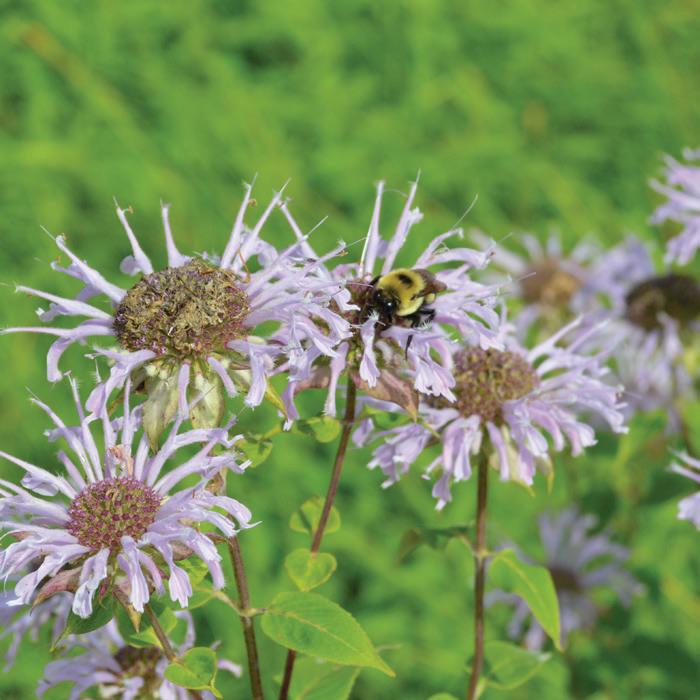
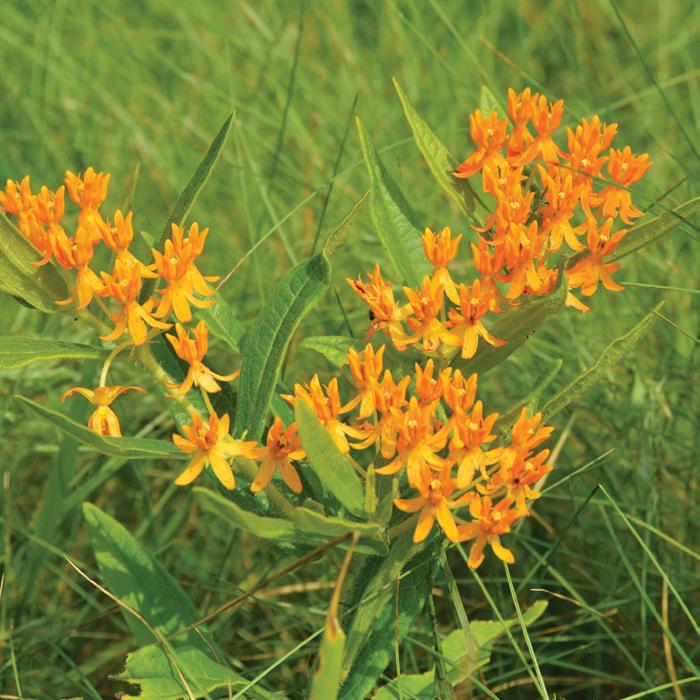
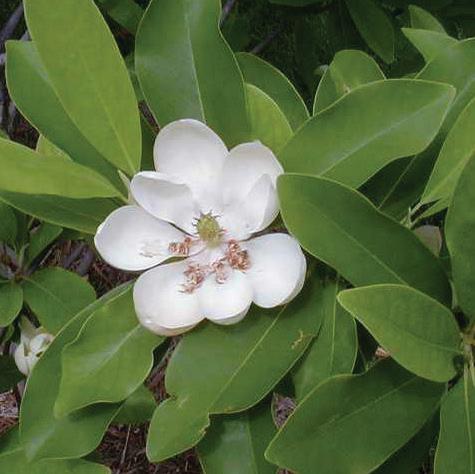
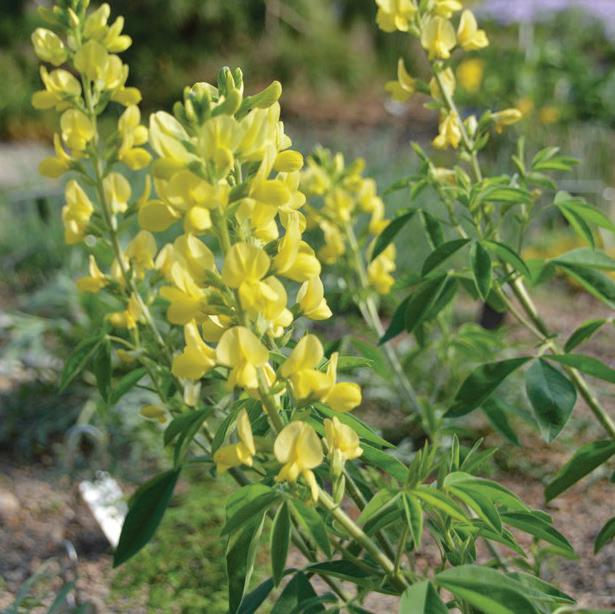
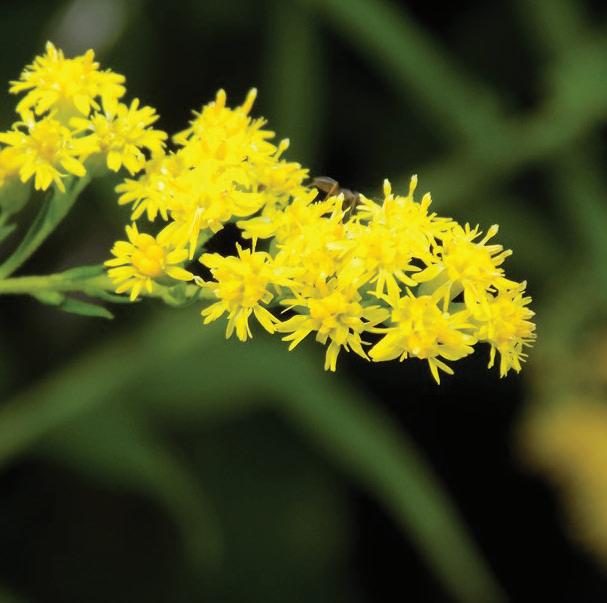
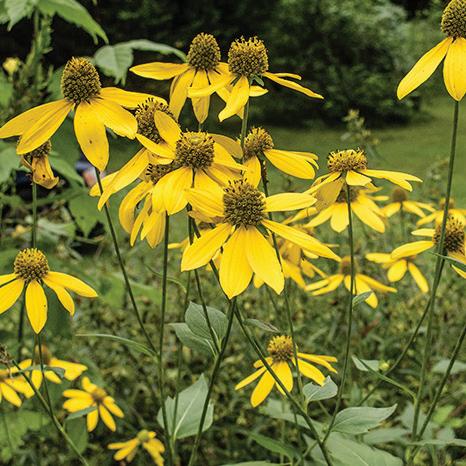
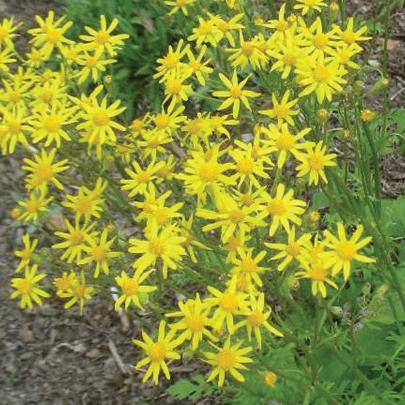
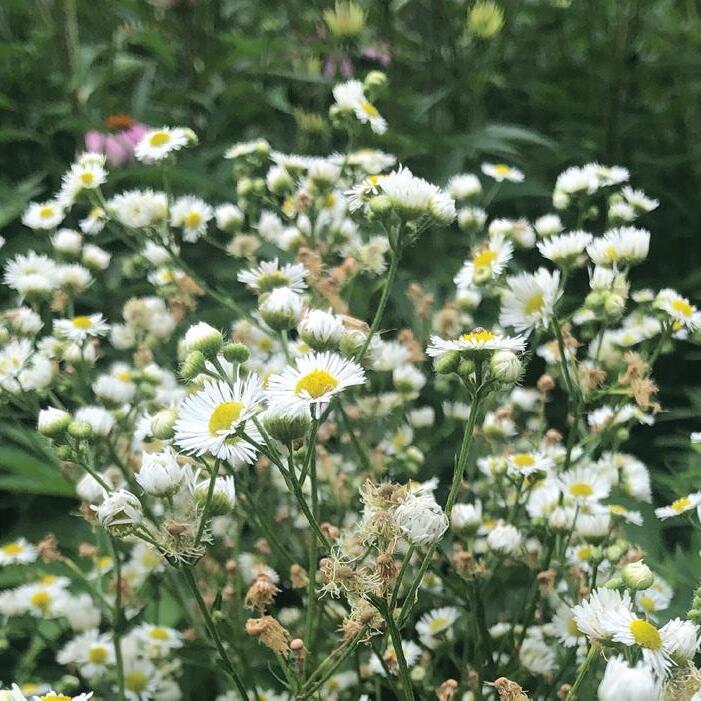
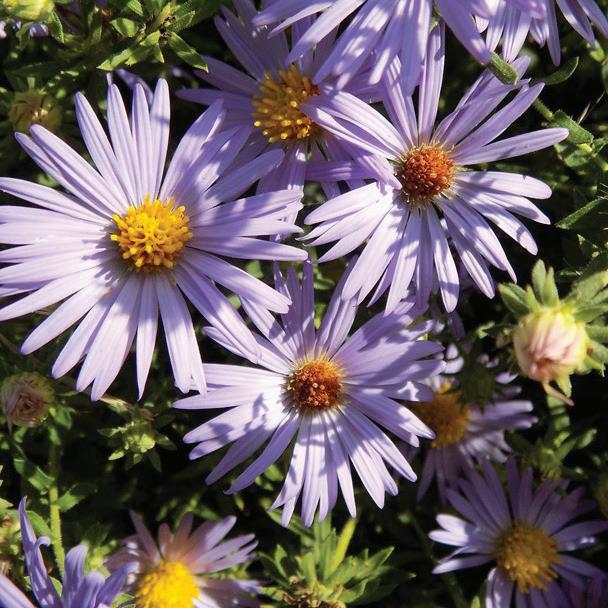
9
Butterfly weed (Asclepias tuberosa)
Aromatic aster (Aster oblongifolius)
Eastern beebalm (Monarda bradburiana)
Daisy fleabane (Erigeron strigosus)
Golden groundsel (Packera aureus)
Beardtongue (Penstemon digitalis)
Cutleaf coneflower (Rudbeckia laciniata)
Goldenrod (Solidago)
Carolina lupine (Thermopsis caroliniana)
TREE
Sweetbay Magnolia (Magnolia virginiana)
Photos: Blake Goll/Staff, Kristen Henwood, Stephanie Kuniholm, Lady Bird Johnson, High Country Gardens, Missouri Botanical Garden, Budburst, Gardenia.net, U.S. Forest Service, American Meadows, Cochato Nursery, Centerton Nursery, Gerris, and Wikipedia.
RUSHTON CONSERVATION CENTER FOUNDATION GARDEN

The gardens surrounding the Rushton Conservation Center (RCC) and along the entrance drive were designed by Johnathan Alderson Landscape Architects and planted upon completion of the RCC in 2018. All of the gardens at the Trust’s office and preserves have been loosely planned, but the gardens surrounding the RCC exhibit the use of native plants in a more manicured way, maintaining a variety of textures and colors while attracting insects and birds.
These gardens also have our largest variety of trees, shrubs, and grasses with perennials scattered throughout. While the flowering plants offer a delightful palette of color throughout the year, several varieties of grasses provide complementary textures and colors ranging from silvery blues like the Bunny Blue sedge to bright greens like Blonde Ambition Grama grass.
While celebrating Wildflower Week, we thought you would also appreciate a look at these other options of native plants for your property.
10
Monica McQuail/Staff
TREES & SHRUBS
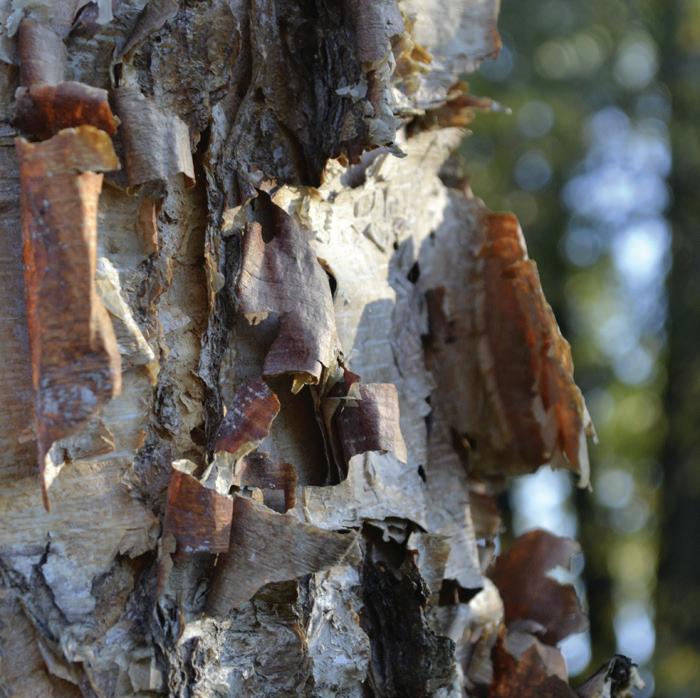




GRASSES




11
PERENNIALS
Yellow buckeye (Aesculus flava)
River birch (Betula nigra)
Winterberry holly (Ilex verticillata)
Blackgum (Nyssa sylvatica)
Coast Azalea (Rhododenron atlanticum)
Blazing star (Liatris spicata)
Cranesbill (Geranium maculatum)
Blue Grama Grass “Blond Ambition” (Bouteloua gracilis)
Little bluestem “standing ovation” (Schizachyrium scoparium)
Blake Goll/Staff, Kristen Henwood, Stephanie Kuniholm, Monica McQuail, Lady Bird Johnson, High Country Gardens, Missouri Botanical Garden, Budburst, Gardenia.net, U.S. Forest Service, American Meadows, Cochato Nursery, Centerton Nursery, Gerris, and Wikipedia.
Photos:
NATIVE SHADE GARDEN

This enchanting little garden changes throughout the seasons. The life cycle of a shade garden has several important stages including flowering, developing seeds for birds or insects, and decomposing. Some of the plants rise from the soil and tilt their faces to the sun, but the majority of the plants in this garden are for shade or part shade. Shade gardens can help fill gaps under trees and shrubs and add color to wooded areas while creating visual texture throughout all four seasons.
All of the plants bring their specialty to this habitat, providing seed or shelter for the birds, adding color in their flowers for us to admire, or offering a tasty morsel from their foliage to a chipmunk. The few plants that prefer a bit of sun are the Stoke’s Aster, Tickseed, and Northern Sea Oats, as you can see by their location being closer to the front edge of Delchester Road.
12
LandArt Events artist, Denise Vitollo painting in the Rushton Farm Shade Garden.
PERENNIALS
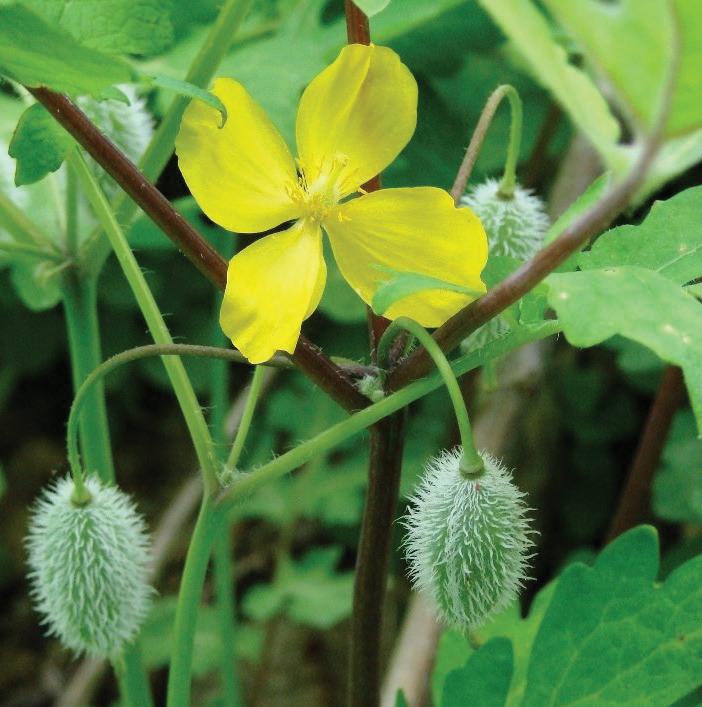
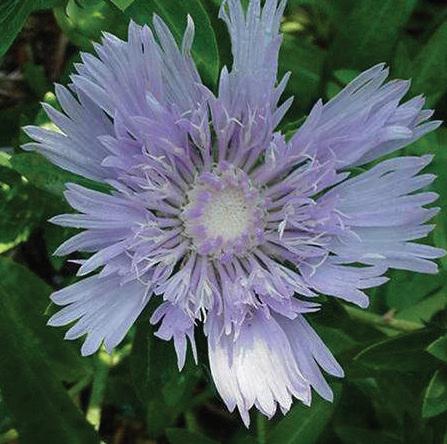
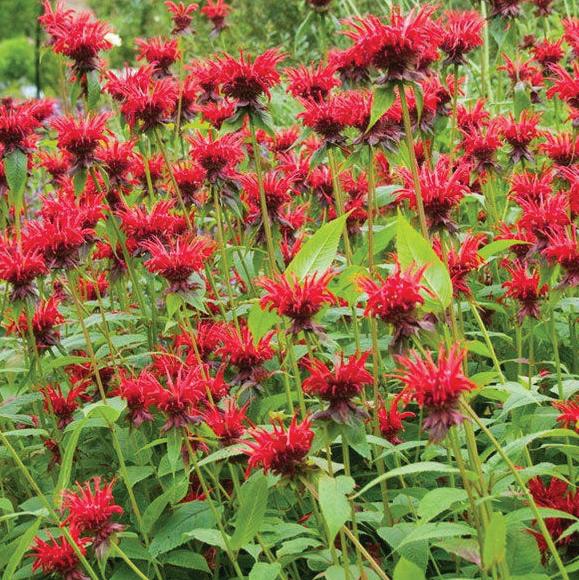
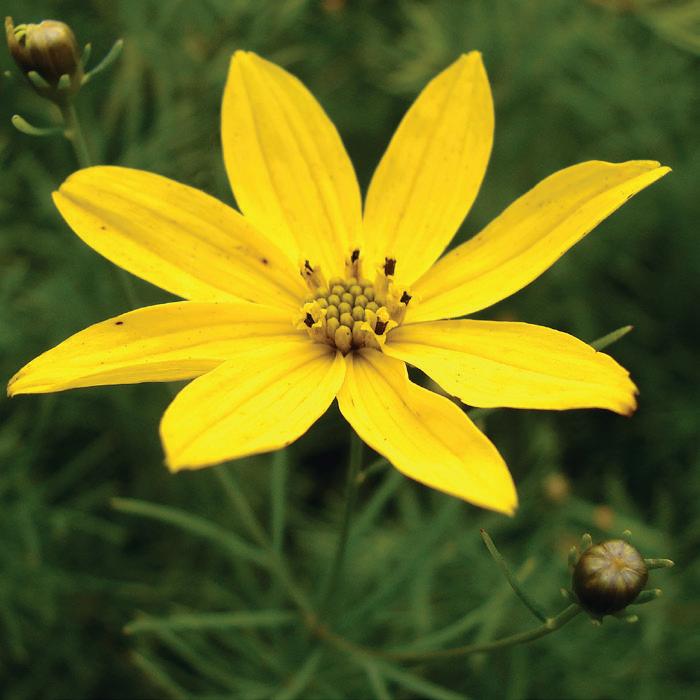
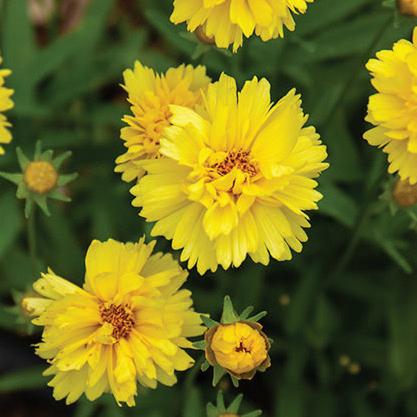
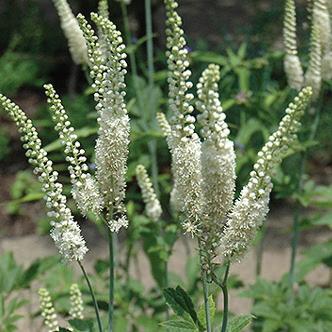
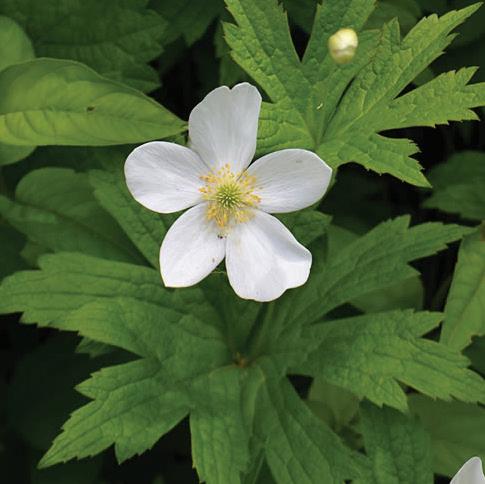
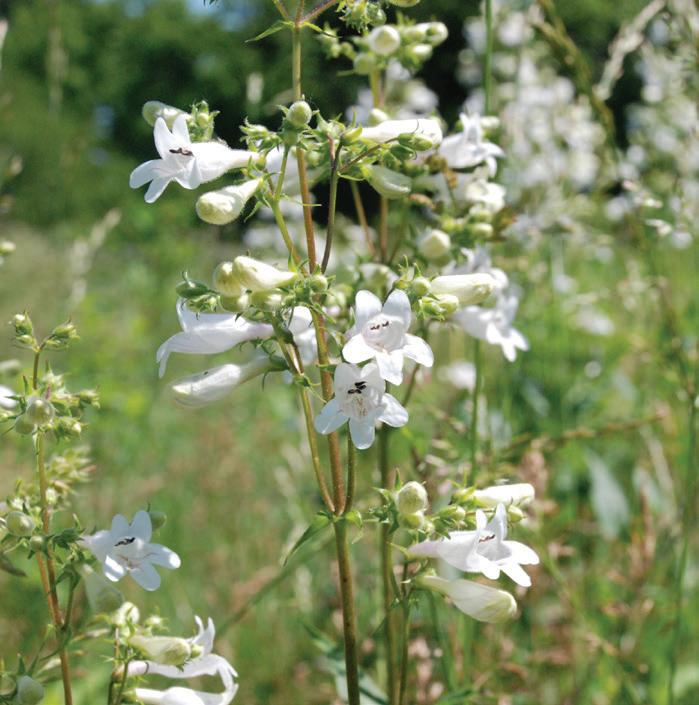
FERNS

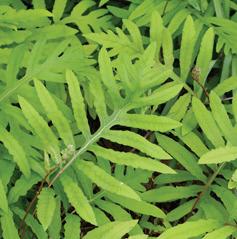
13
Christmas Fern (Polystichum acrostichoides)
Sensitive fern (Onoclea sensibilis)
Canada Anemone (Anemone canadensis)
Black Cohosh (Cimicifuga racemosa)
Leading Lady Charlize (Coreopsis auriculata)
Thread-leaf coryopsis (Coreopsis verticilata)
Beebalm ‘Jacob Kline’ (Monarda didyma)
Beardtongue (Penstemon digitalis)
Stoke’s Aster (Stokesia)
Wood poppy (Stylophorum diphyllum)
Photos:
Blake Goll/Staff, Kristen Henwood, Stephanie Kuniholm, Lady Bird Johnson, High Country Gardens, Missouri Botanical Garden, Budburst, Gardenia.net, U.S. Forest Service, American Meadows, Cochato Nursery, Centerton Nursery, Gerris, and Wikipedia.
RUSHTON FARM WILDFLOWER MEADOW
In the old days, farming was automatically performed in concert with nature. Hedgerows and wild “weedy” meadows next to farm fields were common, as the farm acted as part of the surrounding ecosystem. Now commercial agriculture is much more intensive and often involves clearing all surrounding habitat to make way for expansive farm fields; erosion, soil degradation, and chemical inputs ensue. Rushton Farm is an example of regenerative farming that aims to increase biodiversity, ensure the long-term health of the land, and enhance natural ecosystem services like pollination.
The wild meadows you see next to the working farm fields at Rushton provide habitat for a myriad of insects, including species that are predators to farm pests, as well as other species that promote pollination of the crops. Research shows that the wild pollination services of native bees and butterflies are twice as efficient as the supplemental services of managed honeybees. In other words, managed honeybees cannot replace wild insects in most cases. Therefore, farmers benefit immensely by adopting wildlife-friendly practices such as restoring patches of the natural landscape in their fields.
Our natural wildflower strips have been in place since the birth of Rushton Farm over 10 years ago. Although some perennial plugs were planted early on, it has largely been “let-go” and only mowed once a year in spring to prevent woody growth. Naturally occurring goldenrod and milkweed abound. This thick habitat not only supports beneficial insects, but also many bird species including migratory warblers and sparrows in search of cover and food when passing through in the fall.

14
Wildflower meadow in September.
Photo by Blake Goll/Staff.
PERENNIALS






SHRUB




15
Common yarrow (Achillea millefolium)
Pennsylvania blackberry (Rubus pensilvanicus)
Common milkweed (Asclepias syriaca)
New England aster (Aster novae-angliae)
Purple coneflower (Echinacea purpurea)
Daisy fleabane (Erigeron annuus)
Common boneset (Eupatorium perfoliatum) Short-toothed mountain mint (Pycnanthemum muticum)
Showy goldenrod (Solidago speciosa)
Photos: Blake Goll/Staff, Kristen Henwood, Stephanie Kuniholm, Lady Bird Johnson, High Country Gardens, Missouri Botanical Garden, Budburst, Gardenia.net, U.S. Forest Service, American Meadows, Cochato Nursery, Centerton Nursery, Gerris, and Wikipedia.
Field thistle (Cirsium discolor)

LOSE THE LAWN
 By Andrew Kirkpatrick, Director of Stewardship
By Andrew Kirkpatrick, Director of Stewardship
Earlier this year, the Trust received the exciting news that we had received a grant from the Pennsylvania Department of Conservation and Natural Resources for their Lawn Conversion Program. This exciting funding opportunity allows the Trust to subsidize the cost of converting mowed lawn into meadow in our program area comprising Darby, Ridley, and Crum Creek watersheds in Chester, Delaware, and Montgomery counties. Our goal is convert 50 acres of lawn to meadow over the next three years. We are working with local government, homeowners associations, schools, churches, and private homeowners to achieve this ambitious goal.
Typical costs to convert one acre of lawn to meadow can run $4-5,000. The grant will cover the majority of this cost for the landowner. The landowner will then be responsible for the follow up annual maintenance, which includes mowing once in the early spring and removing any invasive plant species that might pop up. The Trust will be a partner in the long run providing monitoring for the health and success of the conversion project. Funds will be available for reseeding installations as needed.
The benefits of losing the lawn and adopting a meadow strategy are innumerable. Benefits include reducing air noise pollution from gas mowers, improving storm water infiltration of the property (mowed lawn is as about as permeable as pavement!), increased habitat for birds, bees, butterflies, and other pollinators, cost savings from using less gasoline, water, and chemical fertilizers, and of course, knowing that you are contributing to combatting the effects of climate change.
Aside from all of those benefits, wildflower meadows are beautiful to look at in the summer and fall! Species like purple coneflower, mountain mint, New England aster, black-eyed Susan, ironweed, and goldenrod provide a rich tapestry of changing colors throughout the season. Watching a meadow change with the seasons also provides the opportunity to experience a greater connection to nature and instill a sense of place that a lawn cannot. We hope that our work inspires you to think about how you can improve your property for the benefit of nature, the community, and our planet.
LOSE THE LAWN LECTURE
Wednesday, July 19 | 6:00-8:00 pm

Rushton Conservation Center
Have you heard the buzz? Lawns are out, meadows are in! Join us for a presentation highlighting the benefits of meadows and how WCT is leading the effort to convert 50 acres of mowed lawn into rich, diverse meadow habitats. We’ll provide an overview of the best plant species for the area, the process of removing lawns and installing a meadow, and what to expect for the next several growing seasons.
NATIVE ALTERNATIVES TO INVASIVE SPECIES
By Andrew Kirkpatrick, Director of Stewardship
Every time I walk into a nursery or big box store I feel a great temptation to purchase the prettiest plants. However, sometimes the prettiest plants and the ones that stand up to deer are not the best selections available for local pollinators and wildlife. Native plants support local species better than exotic ones because they have evolved in the ecosystems where we live.
And while you will see bees and butterflies at non-native plants, these do not offer the same amount of nutritional content as their native alternatives. A blueberry is far more nutritious for a bird than a barberry. Birds have to eat more of the invasive species to get the same amount of benefits which in turn increases the spread of the invasive seeds in their poop.
With a little research and careful selection we can easily move away from invasive garden species to more beneficial native ones. Here’s a list to get started derived from the excellent book from the Brooklyn Botanical Garden, Native Alternatives to Invasive Species.
INVASIVE SHRUB: Japanese Barberry (Berberis thunbergii)
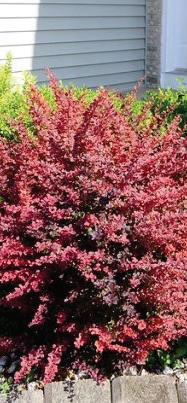
Escapes into the wild and invades forests where it pushes out native shrub species plus it is a vector for ticks.
NATIVE ALTERNATIVES:
Witch Alder (Fothergilla gardenii)
-Small shrub with rounded to mounding form.
-3-5 ft tall and wide.
-Fuzzy white terminal flower clusters in early spring.
-Oval scalloped foliage.
-Orange to burgundy fall color.
New Jersey Tea (Ceanothus americanus)
-Mounding to spreading form.
-1-3 ft tall and 2-4 ft wide.
-Terminal white flower clusters in late spring and summer.
-Deep green foliage.
-Yellow autumn color.
INVASIVE SHRUB: Butterfly Bush (Buddleja davidii)

Bush honeysuckle (Diervilla lonicera)
-See it at the Rushton Conservation Center (RCC) by the front door!
-Small shrub with arching vase-like form.
-2-4 ft tall and 3-5 ft wide.
-Yellow flowers all summer.
-Yellow to burgundy autumn color.
Despite the name, butterfly bush only supports adult butterflies with its abundant nectar but fails to provide for all of the other stages of life.
NATIVE ALTERNATIVES:
Buttonbush (Cephalanthus occidentalis)
-Rounded, irregular form.
-6-10 ft tall and wide.
-Attractive winter silhouette.
-Fuzzy white summertime flowers.
-Deep glossy green foliage.
-Yellow autumn color..
Summersweet (Clethra alnifolia)
-Upright to irregular form.
-4-8 ft tall and wide.
-Tawny to chestnut-colored bark.
-Deep green quilted foliage.
-Spikes of sweet-scented white flowers in summer.
-Yellow autumn foliage color.
18
INVASIVE GROUNDCOVER: Japanese Pachysandra (Pachysandra terminalis) Aggressive spreader, easily escapes into adjacent natural areas.
NATIVE ALTERNATIVES:
Allegheny spurge (Pachysandra procumbens)
-Dense, slow-spreading groundcover.
-Paddle-shaped evergreen leaves.
-Fuzzy spring flowers.
-Rich winter foliage.
-Not deer resistant!
Virginia creeper (Parthenocissus quinquefolia)
-Climbing vine with holdfasts.
-Palmate leaves with five leaflets.

-Smoky-blue berries on red stalks.
-Flaming autumn color.
Blue-eyed grass (Sisyrinchium angustifolium)
-Deer resistant.
-Delicate blue star shaped spring flowers.
-Grass like foliage.
-Grows in dense, tufted clumps.
INVASIVE VINE: Japanese Honeysuckle (Lonicera japonica) Aggressive vine that will smother trees and shrubs.
NATIVE ALTERNATIVE:
Trumpet Honeysuckle (Lonicera sempervirens)

-Well-behaved deciduous vine.
-Scarlet flowers that attract butterflies and hummingbirds.
-Small red berries.
-Gray-green leaves.
-Exfoliating winter bark.
INVASIVE GRASS: Chinese Silvergrass (Miscanthus sinensis Anderss.)

Very aggressive and deep rooted ornamental grass that is sold as sterile but tends to reproduce anyway. A serious threat to meadows and natural grassy areas.
NATIVE ALTERNATIVE:
Indiangrass (Sorghastrum nutans)
-Clumping grass with ascending, tufted foliage.
-Silky golden plumes.
-Red to russet autumn color.
INVASIVE GRASS: Fountain Grass (Pennisetum)

Escapes into natural areas forming dense stands, prolific seeder spreads by wind.
NATIVE ALTERNATIVE:
Pink hair grass (Muhlenbergia capillaris)
-Clumping grass with a rounded crown.
-Low tufts of arching blades.
-Airy red plumes.
-Russet to tawny autumn color.
19
Photos: Lady Bird Johnson, Gardenia.net, and WHYY.
NATIVE ALTERNATIVES TO INVASIVE SPECIES (Continued)
BAMBOO (Bambusa, Phyllostachys and Pseudosasa species)

Description: A popular plant for privacy screens due to its fast and dense growth habit, these species will quickly spread through underground rhizomes and can become out of control.
Alternatives: big bluestem (Andropogon geradii), indiangrass (Sorghastrum nutans), for privacy screens: red cedar (Juniperus virginiana), ‘Green Giant’ arborvitae (Thuja standishii x plicata ‘Green Giant’)
EXOTIC BUSH HONEYSUCKLES (Lonicera species)
Description: These species were introduced as ornamental specimens but have escaped into the wild and disrupted woodland habitats and hedgerows. The fruit is carbohydrate rich, which does not provide enough fats for migrating birds.
Alternatives: arrowwood (Viburnum dentatum), northern bayberry (Myrica pensylvanica), spicebush (Lindera benzoin), red or black chokeberry (Aronia arbutifolia or melanocarpa)
MULTIFLORA ROSE (Rosa multiflora)
Description: Introduced as an ornamental species in 1866, multiflora rose was later promoted for erosion control, as a living livestock fence, and wildlife cover by the government. It was eventually determined to be highly invasive, quickly outcompeting native shrubs in forests and other habitats.

Alternatives: common blackberry (Rubus allegheniensis), swamp rose (Rosa palustris), pasture rose (Rosa carolina)
PRIVET (Ligustrum species)
Description: Widely used for hedges and privacy screens, privet has invaded forests, floodplains, wetlands and fields throughout the Northeast. It forms dense thickets that outcompete native vegetation.

Alternatives: inkberry holly (Ilex glabra), spicebush (LIndera benzoin), blackhaw viburnum (Viburnum prunifolium), red or black chokeberry (Aronia arbutifolia or melanocarpa)

NORWAY MAPLE (Acer platanoides)
Description: Introduced as an ornamental species, Norway maple is highly aggressive and invades forests, fields, and many other habitats where it displaces native trees and shrubs.

Alternatives: American beech (Fagus grandifolia), red maple (Acer rubrum), sweet gum (Liquidambar styraciflua), willow oak (Quercus phellos), black gum (Nyssa sylvatica)
ENGLISH IVY (Hedera helix)

Description: Commonly used as an ornamental groundcover, English ivy will escape into the wild and form dense impenetrable mats on the forest floor, woodland edges, fields, hedgerows, coastal areas and wetlands. This vine will smother and kill trees and harbors bacterial leaf scorch, a harmful pathogen that kills oaks, maples, and elms.
Alternatives: Virginia creeper (Parthenocissus quinquefolia) (caution should be used where planting as it can be quite aggressive), crossvine (Bignonia capreolata), wild ginger (Asarum Canadensis), lady fern (Athyrium filix-femina), maidenhair fern (Adiantum pedatum), (foam flower (Tiarella cordifolia), hairy alumroot (Heuchera villosa)
20
Photos: Lady Bird Johnson, Gardenia.net, Eric Boyda
STAFF FAVORITE PLANT LIST
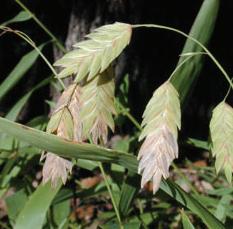
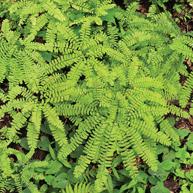
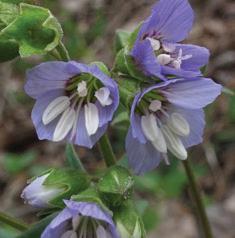
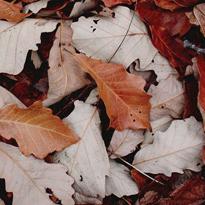
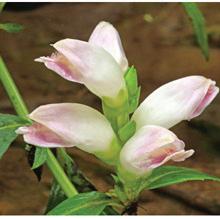

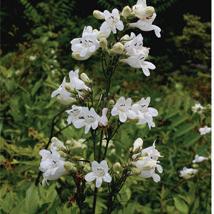
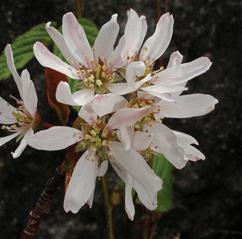
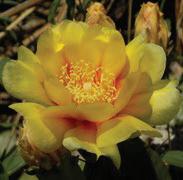
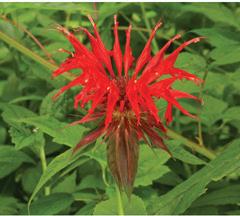
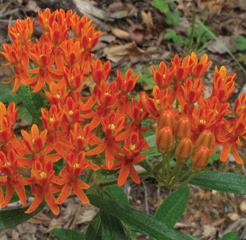
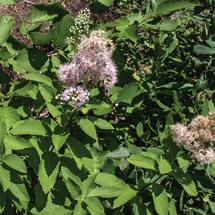
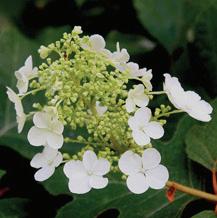
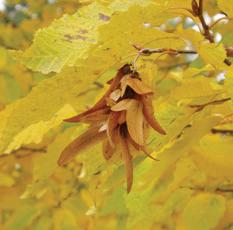
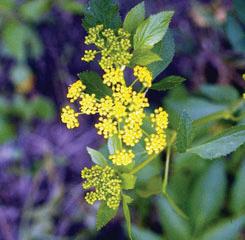

TREES & SHRUBS
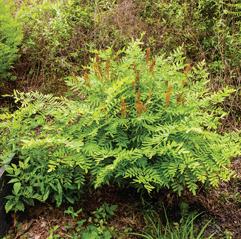
PERENNIALS
GRASSES & FERNS
21
Blackgum (Nyssa sylvatica)
Ironwood (Carpinus caroliniana)
Serviceberry (Amelanchier laevis)
Beardtongue (Penstemon digitalis)
Oakleaf Hydrangea (Hydrangea quercifolia)
Meadowsweet (Spirea latifolia)
Golden Alexanders (Zizia aurea)
Butterfly Weed (Asclepias tuberosa)
Bee Balm (Monarda didyma)
Prickly Pear (Opuntia humifusa)
Swamp White Oak (Quercus bicolor)
Jacob’s Ladder (Polemonium reptans)
Cranberrybush (Viburnum trilobum)
Turtlehead (Chelone glabra)
Maidenhair Fern (Adiantum pedatum)
Royal Fern (Osmunda regalis)
Sea Oats (Chasmanthium latifolium)
Photos:
Lady Bird Johnson and Missouri Botanical Garden.
Restoring Rushton’s Shrub-Scrub for the Benefit of the Birds


 By Mike Cranney, Preserve and Facilities Manager
By Mike Cranney, Preserve and Facilities Manager
For over 13 years, Willistown Conservation Trust’s (WCT) Bird Conservation program has been researching migratory and breeding bird populations at Rushton Woods Preserve. A trained team of staff and volunteers utilize mist nets placed strategically throughout the Preserve’s hedgerows to monitor species, collect data, and band individual birds so they can be tracked throughout North and South America. This research has helped contribute to the understanding of what birds need to survive, while highlighting the importance of places like Rushton Woods Preserve for migrating species to use as respite where they can rest and refuel during their long journeys every spring and fall.
Simply preserving open space, however, is not sufficient for their survival; birds require certain types of plants for adequate food and shelter. They are especially attracted to what is known as “scrub-shrub” habitat, which consists of robust thickets of shrubs and small trees that provide essential cover from both predators and the elements. This habitat is also an important source of food, but sadly our ecosystems have become overrun with non-native, invasive plants whose fruit do not have the nutritional value that birds need.
For example, one of the most common shrubs in the modern landscape is the Amur honeysuckle (Lonicera maackii), whose abundant berries are regularly eaten by fruit-loving bird species. However, these berries contain more sugar than fat, and therefore do not provide the fuel necessary to sustain migration. Birds depend on the insects and fruit found upon the native plants that have evolved in the landscape alongside them. In order to fully support bird populations, both the habitat structure and species composition need to be considered.
22
Sparrow in the brush. Photo by Jennifer Mathes
PLANTING PHOTOS BY MIKE CRANNEY
Prepping the area for new plantings.
Finished hedgerow. Now we watch it grow!
Unfortunately, the hedgerows at Rushton Woods Preserve have become heavily invaded by non-native species over the years. Both breeding and migrating birds still flock there, but they are not getting the nourishment that they need. A recent study conducted by a University of Pennsylvania graduate student found that birds stopping at the Preserve during migration were not gaining any fat, likely due to that fact that they were primarily eating fruit from Amur honeysuckle shrubs. The structure of the habitat is beneficial, but the plant species encompassing it are not.
Now, thanks to a generous grant from the Pennsylvania Society for Ornithology (PSO), WCT has begun the process of restoring the expansive hedgerow to native scrub-shrub habitat. In the fall of 2022, a roughly 5,000 square ft. area of invasive thicket was removed and replanted with over 150 native shrubs and trees representing 25 different species. Bird friendly varieties such as viburnums and chokeberries were emphasized and placed closely together to ensure that they grow into dense habitat. Moving forward, the goal is to repeat this process in a different section of the hedgerow each year until it is entirely restored with beneficial native plants. By working through piece by piece, the overall structure of the habitat can be maintained for the birds while the new plants mature.

The existing groups within the organization uniquely position WCT to make the best of this restoration project. The Land Stewardship team will handle the management of the planting site, while the Bird Conservation program’s ongoing research will be an excellent way to monitor the effect the improvements have on breeding and migratory birds. Additionally, the organization’s outreach and education departments will be able to capitalize on this endeavor as an opportunity for landowners to learn about the ecological value of habitat that is too often considered merely an eyesore. Above all, projects such as these are made possible through partnerships with groups like Pennsylvania Society for Ornithology that care about the environment and dedicate themselves to conservation.
To learn more about how you can plant native, stay tuned for this year’s Habitat at Home programming with our
23
Mike and volunteers planting native shrub hedgerow.
Stewardship Team!
MEADOW WILDFLOWERS & GRASSES
PLANNING & MAINTENANCE GUIDE
SHADE GARDEN TREES & SHRUBS, PERENNIALS, AND GRASSES & FERNS
PREPARE:
September – January: Pick a location for your meadow that is generally sunny and well-drained. Existing lawn areas or fields are ideal. The size of the meadow should be determined by how much space you are willing to dedicate to the project and your budget. As a guide, a one-quarter acre meadow would require approximately 2,700 wildflower plugs planted 2 feet on center.
February – Late March: Work with a landscape professional or reputable nursery that specializes in native plants to place an order for wildflowers that can be scheduled to arrive for installation in mid-April – early May.
Late March – Early April: Begin preparing the meadow area by mowing it to a height of 2-3 inches. Continue to mow the project area until you are ready to install the wildflower plugs.
PREPARE:
Choose a location for your garden that receives full or partial shade from either nearby canopy trees or existing structures. Once you choose a suitable location, determine the size of the garden based on how much space you are willing to dedicate to the project and your budget. Once you determine the size of the area you are planting, work with a landscape professional/designer or native plant nursery that specializes in native plants to receive an estimate on how many plants should be ordered for your space. If there are existing plants in the space you identified, take an inventory, and decide what to retain and what to remove and replace. Pay particular attention to the guidelines for the plants’ recommended height and spacing.
Gain inspiration from local woodlands by noting the various vertical layers of plant life and aim to echo these layers in your design by including a mix of native plants in the upper canopy, understory, and ground layers.
RIPARIAN BUFFER TREES & SHRUBS
PREPARE:
Choose a location along your stream where the riparian buffer area is degraded or non-existent. Measure the square footage of the area you intend to plant. If your project involves planting where no buffer exists, measure outward from where the bank drops off to the stream; and while there is no specific ideal buffer width, the wider the buffer area, the greater the environmental benefits. We suggest a minimum of a 25’ buffer width.
Once you know the size of the area you will be planting, you can work with a landscape professional or reputable nursery that specializes in native plants to estimate how many trees and shrubs should be ordered. Typically, plants are spaced 12-15 feet apart.
Prior to planting, you may want to prepare the project area by mowing it to facilitate digging the holes.
24
PLANT:
Mid-April – Early May: Once your wildflower plugs arrive, it may be tempting to lay out plants in neatly arranged rows, but clustering plants together while still paying attention to plant spacing will echo the organic patterns found in nature. In addition, wildflowers planted in clusters with several plants of the same species within a few feet of each other will also help to attract more pollinators. Use a handheld auger (2” +/- in diameter) or shovel to open holes for your wildflower plugs. Then you can easily insert each plug in the hole and tamp the soil around it.
PLANT:
PRESERVE:
Early May – Early October: Once your wildflowers are planted, regularly inspect your meadow to ensure that invasive weeds are not colonizing the space. Hand pulling or cutting weeds below the height of native species should help to manage any invasives that may creep into your meadow.
Year Two and Beyond: Mow the entire meadow once a year in late March to early April to a height of about 6 inches -- before the young wildflowers start pushing through the grass. Although some landscape professionals recommend mowing meadows in the fall as well, leaving plants unmowed over the winter provides important food and shelter for wildlife during the harsh winter months. Should you decide to mow a second time in the fall, wait until the year following installation to give the young wildflowers a chance to establish. Wildflower plugs generally take three years to fully mature, so patience is required, but the result is well worth the wait!
PRESERVE:
Prior to digging holes and removing the plants from their containers, place them in the garden according to your intended design; this will allow you to visualize the layout and adjust plant spacing and location as desired.
We recommend planting the trees and shrubs first. To start, dig holes at least as deep as the container and twice as wide. Remove the plant from the container and loosen the roots, especially if they are tightly bound. Adjust your plant in the hole, adding or removing soil as needed so the root flare/crown (where the roots start to spread from the trunk or stems) is just above ground level. Tamp the soil around the roots as you fill the hole to ensure that the plant is firmly planted.
Once the trees and shrubs are planted, add the herbaceous plants as appropriate. Planting guidelines are similar to trees and shrubs, with a focus on proper hole depth and width, loosened roots, and tamped soil around the plant to provide the support it needs to grow. A good dose of water after all plants are in the ground--and regularly thereafter--will help ensure their successful adaptation to their new home.
PLANT:
Follow guidelines for spacing your trees and shrubs the appropriate distance from each other, but note that your plants do not need to be installed in perfect rows. Creating more naturalistic groupings of plants can echo the organic patterns found in nature.
Many of your trees and shrubs will likely arrive in pots. Dig the hole at least as deep as the pot and twice as wide. Remove the plant from the pot and loosen the roots, especially if they are tightly bound. Adjust your plant in the hole, adding or removing soil as needed so the root flare (where the roots start to spread from the trunk) is just above ground level. Take care not to bury the plant too deep or cover the trunk with soil, while making sure your plant isn’t sitting too high, with its top roots exposed. Tamp the soil around the root ball as you fill the hole to ensure that the plant is firmly planted.
Once you have planted your shade garden, it is important to mulch it annually and weed it regularly to give the native plants the best chance to establish successfully. Including a mix of diverse herbaceous plants that will spread and expand will also help to suppress weeds. Following the first 3 +/- years after installation, the garden should require less maintenance. While native plants are best suited to their region and generally require less care and maintenance than many non-native ornamental plants, it will likely be necessary to water plants for the first couple of years, especially during periods of drought or high heat during the height of summer.
PRESERVE:
Once your trees and shrubs are planted, it is important to protect them from deer damage! Placing tree guards or constructing your own fencing around individual trees or shrubs is the best way to protect them from deer until they become large enough to survive without protection (typically 8-10 years). Once installed, periodically check the plants and manually remove any aggressive vines climbing on the tree guards or fencing. Avoid the use of chemicals to fight the vines; they can harm the plants, insects, and the water system.
Written by Bill Hartman & Kristen Henwood
25
UPCOMING PROJECTS AT OUR PRESERVES
By Andrew Kirkpatrick, Director of Stewardship
UPCOMING PROJECTS AT RUSHTON WOODS PRESERVE
UNIVERSAL ACCESS PATH FROM RCC TO RUSHTON FARM | September 2023
With a generous grant from Chester County and PA Department of Conservation and Natural Resources, we will be constructing a hard surface universal access path connecting the RCC to the Farm between the hedgerow along Delchester Road and the farm field. This path will facilitate users of all abilities to enjoy the scenic vistas of the farm and preserve with seating. Restoration of the hedgerow with native plants will also be included in this project.
BIORETENTION BASIN AND UNIVERSAL ACCESS LOOP PATH AT RUSHTON | Spring 2024
With generous grants from the PA Department of Conservation and Natural Resources and PA Department of Environmental Protection, we will be constructing a natural bioretention basin to intercept and slow down stormwater at the preserve. The project will reduce erosion into Okehocking Run and create rich habitat for wildlife. Included in the project will be a universal access loop path providing interaction with the new infrastructure for all visitors.
UPCOMING PROJECT AT KIRKWOOD PRESERVE
STONE STEP CROSSING OVER CRUM CREEK | August 2023
With funding from Willistown Township, we are working with Land Concepts to design and install a new stone step crossing over Crum Creek at our Kirkwood Preserve. The stone step crossing will be similar to the ones at Ashbridge Preserve. The new crossing will connect to the far side of the preserve, which was recently expanded by 12 acres with funding from Willistown Township, Chester County, and the PA Department of Conservation and Natural Resources.

26
2023 Event Calendar
Visit

JULY 17 - 23
JULY 19
JULY 20
JULY 29
AUGUST 16
AUGUST 20
SEPTEMBER 14
SEPTEMBER 16
SEPTEMBER 22
OCTOBER 12
OCTOBER 14
OCTOBER 21
OCTOBER 29
NOVEMBER 4
NOVEMBER 25
DECEMBER 2
Wildflower Week
Lawn Conversion Lecture
Botanical Cocktails: 13th Street Cocktail
Summer Harvest Celebration
Bug Night with the Academy of Natural Sciences
Forest Bathing with Holly Merker
Field-to-Feast Dinner
Avian Adventures with Aaron
Community Supper Series Picnic
Field-to-Feast Dinner
Avian Adventures with Aaron Run-A-Muck
Full Moon Owl Prowl Market in the Meadow
Avian Adventures with Aaron
Avian Adventures with Aaron
Recurring Events
WEDNESDAYS
“Just Show Up” Volunteer Wednesdays at Rushton Farm
This is an opportunity to work in the fields with the farmers. You can show up at the farm from 9 am - 4 pm on any Wednesday during the season.
THURSDAYS
Fall Migration Bird Banding
September 7 - October 19
Visit the bird banding station at Rushton Woods Preserve to observe the banding process, learn about the science of bird migration, and see the importance of land conservation for migratory birds. Space is limited. Please register in advance and stay within the designated viewing area for the safety of our staff and visitors.
SELECT FRIDAYS & SATURDAYS
Watershed Volunteer Days
July 15, August 12, September 16, October 7, November 4
Join the Watershed Team on one Friday or Saturday per month for family friendly opportunities to help maintain the landscape at our nature preserves and learn from our resident scientists about what makes these habitats so special.
RUSHTON NATURE KEEPERS (RNK)
RNK educational programming will resume in June! Check for registration details and the program schedule at wctrust.org/rushtonnaturekeepers.
Events subject to change - check wctrust.org/calendar for the latest details.
27
code for more
information
registration
wctrust.org/calendar or scan
event
and
MIKE CRANNEY, PRESERVE MANAGER
Mike is responsible for the management of the Trust’s 400 acres of nature preserves—Ashbridge, Garrett Mill, Kirkwood, and Rushton Woods. He also manages and works with volunteers and assists with monitoring the Trust’s private conservation easement properties. Mike interned and worked at Morris Arboretum as a gardener. Mike earned his MS in Environmental Studies at the University of Pennsylvania.
Mike will be leaving Willistown Conservation Trust in July, we wish him the best of luck moving forward and are grateful for all of his hard work and dedication to the preserves and land.


SARAH HUTCHIN, GARDEN AND LANDSCAPE COORDINATOR

Sarah Hutchin manages the maintenance of the gardens at Rushton Farm and tends the RCC gardens, rain garden, and meadow. An avid gardener and horticulturist, Sarah has been a docent for many years at Mt. Cuba Center in Delaware. She also grows natives throughout her property on a ridge in Downingtown, PA.
ANDREW KIRKPATRICK, DIRECTOR OF STEWARDSHIP Andrew is responsible for all environmental stewardship initiatives as well as the oversight of more than 80 conservation easements held by the Trust. Andrew has a broad background in environmental planning, restoration and management. Prior to joining the Trust, he was the Manager of Land Stewardship at the Schuylkill Center for Environmental Education where he managed a 340-acre preserve, led trail projects, coordinated volunteer activities, and managed a retail native plant nursery. He has also worked at the Morris Arboretum, The Delaware Valley Regional Planning Commission and the Ambler Arboretum at Temple University. Andrew holds an MS in Landscape Architecture from Temple University.
28
STAFF BIOS
SUGGESTED READS

USEFUL APPS
iNaturalist | Provides species recommendations of plants, animals, and insects based on user photos.





The Cornell Lab Merlin Bird ID | Easy to use app to identify birds by size, main colors, and position in the landscape. Now includes sound ID that will record the birdcall and display likely species!
Seek by iNaturalist | Uses the camera in your phone to identify plants, animals, and insects in real time.
29
APP
BOOK &
RECOMMENDATIONS
SPRING 2023 TRENDS ARE HERE, AND ONE THING is clear — manicured lawns are out and natural ecosystems are in. It’s time to create habitat at home, no matter how big or small your backyard may be. The birds, bees and butterflies will surely thank you for adding some biodiversity to your yard.

KILLER LAWNS
First gaining popularity at the homes of wealthy landowners in 17th-century England, lush green lawns were introduced to the United States in the 1800s. The 1950s saw the use of pesticides, fertilizers and herbicides, and as suburbs grew, so did these small plots of grass devoid of weeds or pesky bugs.
Today, lawns make up 40 to 50 million acres, a number that equals all this country’s national parks combined. That’s a lot of lawn to maintain! And it’s about time we ask ourselves, “Is it worth it?”
Despite their popularity, lawns are inherently a contradiction. They’re the most-grown crop in the U.S., but they don’t produce sustainable food that wildlife or humans can actually eat. Lawns are a staple of American suburban life, yet they were imported from England. In fact, the most prized grass in our country — Kentucky bluegrass — is native to Europe and the Middle East, not Kentucky. Lawns evoke a sense of ease and leisure, although they require an inordinate amount of work, time and money to maintain. Their lush green color signifies life, yet caring for them pollutes the earth. In reality lawnmowers emit noise pollution and pollutants into the air, and fertilizers contaminate our water and harm aquatic life.
WHAT TO DO?
With increasing research that suggests we’re in the midst of an extinction crisis — North American bird populations have declined
30
Reprinted May 2023
Monica McQuail, Willistown Conservation Trust
by a third, 82 native fish species are imperiled, and our pollinators are disappearing at an alarming rate — one of the most important things you can do to help save these diminishing species is to convert your backyard into viable habitat that is biodiverse, meaning it can support all sorts of life.
Converting your lawn may sound like a daunting task, but the good news is you can start to regenerate biodiversity little by little. And you can hop on this trend even if you don’t have a lawn!
The most important step in adding some biodiversity to your home is to plant native plants (see plant list in sidebar). Begin by incorporating native species into your garden around your home and even on your balcony, terrace or deck in containers.
Not only are native plants visually appealing, but they require less water and are easier to maintain, unlike their invasive
counterparts. Planting just one native plant in your yard can offer a myriad of benefits to our planet.

NATIVE PLANTS
Looking below the surface, native flowers, shrubs and trees have long root systems that not only suck up more water to help diminish flooding, but also filter out harmful nutrients and salts that would otherwise travel to our waterways and harm the fish there. In comparison, turf grasses often planted in yards have shallow and dense root systems, which do very little to absorb rain water. Native plants also have the added benefit of being able to use the beneficial nutrients already present in your soil, thus eliminating the need to buy pricey fertilizers to promote growth.
Above ground, native plants produce flowers, berries and leaves that provide
For Birds:
• Composite flowers, spruces, hemlocks, pine bring house finch, purple finch, Cassin’s finch, American goldfinch, lesser goldfinch, pine siskin
• Birches and sumacs bring blackcapped chickadee, Carolina chickadee, mountain chickadee, tufted titmouse, juniper titmouse, oak titmouse
• Pines, hickories, oaks, cherries bring downy woodpecker, hairy woodpecker, red-bellied woodpecker, ladder-backed woodpecker, whiteheaded woodpecker, northern flicker
• Oaks and beeches bring American crow, fish crow, northwestern crow, blue jay, Carolina scrub-jay, woodhouse scrub-jay, Florida scrub-jay
• Sunflowers, elderberries, serviceberries bring northern cardinal, rose-breasted grosbeak, blackheaded grosbeak, blue grosbeak, scarlet tanager, western tanager
• Blackberries and wild grasses bring dark-eyed junco, whitethroated sparrow, white-crowned sparrow, song sparrow, lark sparrow
• Columbine, jewelweed, bee balm bring hummingbirds
For Butterflies and Caterpillars:

• Trees, such as native birches, maples, oak trees, willows
• Flowers, such as goldenrod, milkweed, sunflowers
For Bees:
• Aster, black-eyed Susan, dogwood, goldenrod, ironweed, prairie clover, prairie coneflower, thistle, tickseed, wingstem
long-lasting and nutrient-dense sustenance to pollinator species like bees and butterflies, as well as the birds in our area. Additionally, native shrubs and trees offer valuable shelter where wildlife can raise their young.
As your yard becomes a haven that supports a web of life, you’ll likely find those

31
1 2 3
1. Native wildflower meadow outside a home
2. Monarch butterfly on cup plant
3. Common buckeye on short-toothed mountain mint
pesky bugs that you’d normally need pesticides to eradicate now get eaten up by other species.


JOIN THE MOVEMENT
By adding biodiversity to your yard, not only are you helping the other beings around you, but you’re also contributing to the larger “Homegrown National Park Movement.” This movement aims to turn half — that’s about 20 million acres — of all privately owned green lawns in the U.S. into native plantings. Small efforts by many can make a world of difference. More at HomeGrownNationalPark.org


Gone are the days when lawns existed purely for curb appeal. Your backyard should provide joy, nourishment and life for all inhabitants, from the monarch caterpillar munching on milkweed and the goldfinch looking for seeds among some purple aster, to the children who stare with wonder at this incredible world.
After all, if something is not eating your plants, then your garden is not part of the ecosystem. We’re predicting this trend is one that’s going to last. ©
Willistown Conservation Trust focuses on 28,000 acres within the watersheds of Ridley, Crum and Darby Creeks. Since 1996, the Trust has permanently conserved over 7,500 acres, including three nature preserves open to the public: Ashbridge, Kirkwood and Rushton Woods Preserves, the latter home to Rushton Conservation Center and Rushton Farm. Join the Trust for “Habitat at Home” programming, held throughout the year. Learn more about biodiversity at WCTrust.org and by following @WCTrust.
32
5 4 6 7
4. Native flowers planted in front yard
5. Bird hidden in Virginia cup plant
6. Walking path with native wildflowers
7. Bumble bee on bee balm
PHOTOS BY BLAKE GOLL, JENNIFER MATHES AND MONICA MCQUAIL
Your support allows us to save, study, and share land, water, and habitat.
SAVE the land by preserving and stewarding critical habitats for threatened species.

STUDY the impacts of land conservation by researching water chemistry and bird migration.
SHARE the knowledge by educating the community about the importance of conservation and sustainable growing practices.

YOU HAVE HELPED US:
LAND | Conserve 7,500 acres.
HABITAT | Maintain 278 acres of public preserves + 37 5 miles of trails


BIRDS | Banded 18,570 songbirds of 103 species at Rushton Woods Banding Station since 2010
WATER | Collect 56 monthly water chemistry samples.




FARM | Grow 30,000 pounds of food annually at Rushton Farm.
OUTREACH & EDUCATION | Reach 3,000+ people annually through programs, events, and volunteering.
LAND WATER FARM EDUCATION & OUTREACH HABITAT BIRD S A V E S T U D Y S H A R E
D o n
t e
e r e !
a
h

34 WILLISTOWN CONSERVATION TRUST | 925 PROVIDENCE ROAD NEWTOWN SQUARE, PA 19073 | 610.353.2562 | WCTRUST.ORG

































































 By Andrew Kirkpatrick, Director of Stewardship
By Andrew Kirkpatrick, Director of Stewardship
































 By Mike Cranney, Preserve and Facilities Manager
By Mike Cranney, Preserve and Facilities Manager





























